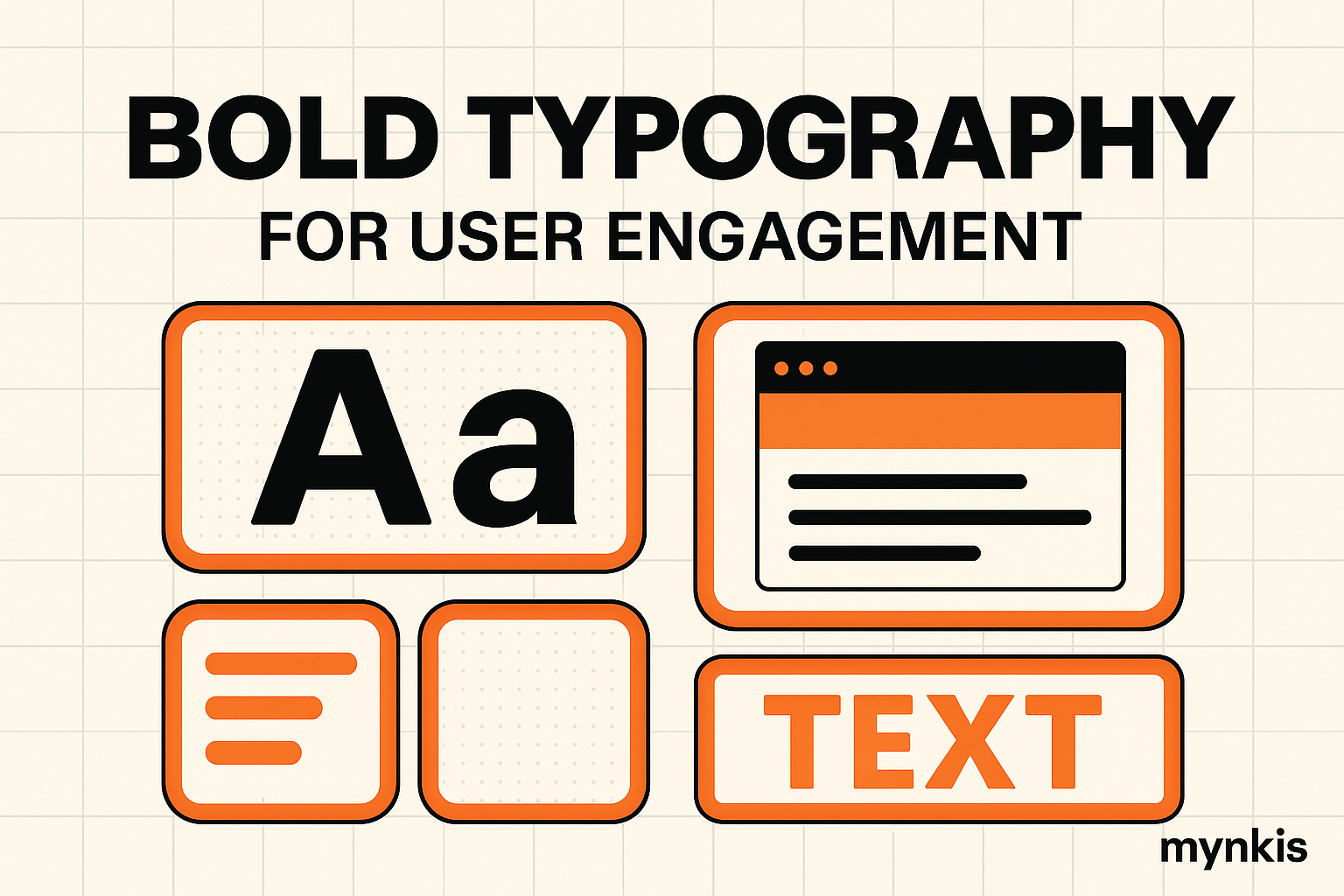Schedule a Demo
Typography isn't just about making words readable; it's an essential element in guiding user behavior and enhancing their experience. In my work with business owners, I've noticed how bold typography isn't just a statement—it's a strategic tool for driving user engagement. As the web continues to evolve, the bold use of type has become synonymous with cutting-edge design, ensuring that sites not only stand out but also effectively convert visitors.
Recently, there's been a resurgence in bold typography across the web. These striking, large fonts aren't merely there for visual appeal; they serve as immediate focal points on landing pages, guiding users exactly where you want them to go. Websites with heavy traffic from search engines benefit significantly, as bold fonts help to quickly communicate key information to users in a visually overwhelming digital world.
In creating websites that convert, bold typography plays a pivotal role. When we design landing pages, the use of bold, assertive fonts can significantly increase the click-through rates on call-to-action (CTA) buttons. A simple but bold statement like “Book Now” or “Get Started” can dramatically affect user behavior, pushing them towards making a decision faster and more confidently.
Beyond aesthetics, the application of bold typography in website design impacts SEO and site accessibility. Search engines value content that's clear and scannable. Bold headers not only break up the text, making it more readable for users but also help search engine algorithms to understand and categorize your content better. From an accessibility standpoint, bold fonts can make text more distinguishable, benefiting users with visual impairments.
Business owners and executives who want to maximize their website's organic reach often turn to design trends like bold typography. Why? Because bold fonts help to highlight key phrases, titles, and sections, which align perfectly with SEO strategies that emphasize content structuring. A visually strong headline or a distinctive CTA button could be the difference between a user scrolling past or engaging with your page.
There’s a psychological aspect to using bold fonts that isn’t immediately obvious. Research from leading design institutes, such as the AIGA, suggests that bold text can evoke a sense of urgency or importance in users. This emotional response can lead to higher engagement levels, which, when integrated with a well-optimized user journey, can significantly improve conversion rates for booking-enabled sites.
While incorporating bold fonts into your website design, strategy is key. Here are a few tips:
Consider the case of Airbnb, where bold typography effectively communicates availability and urgency. Phrases like “Tonight” or “Last Chance” are prominently displayed in bold, nudging potential guests to make quick decisions. Similarly, booking.com uses bold headers and strategic placement to guide users efficiently through the booking process.
In custom software development, the ability to tailor typography to the client's brand is invaluable. A unique, bold typeface not only distinguishes a website but also enhances brand identity, which in turn, fortifies trust and conversion. My experience with various enterprise projects underscores the power of tailored typographic elements to not just look good, but to also work hard in driving user action.
Despite the benefits, bold typography does come with challenges. Overuse can lead to a cluttered feel, diminishing the intended impact. Best practices include:
Looking ahead, we can expect bold typography to remain a key player in website design, especially as businesses continue to prioritize user conversion and engagement. Emerging technologies like variable fonts will offer even more opportunities for personalized and dynamic typographic experiences, keeping web design at the cutting edge of digital marketing strategies.
For those of you looking to enhance your websites for bookings and better SEO performance, consider these actionable takeaways:
